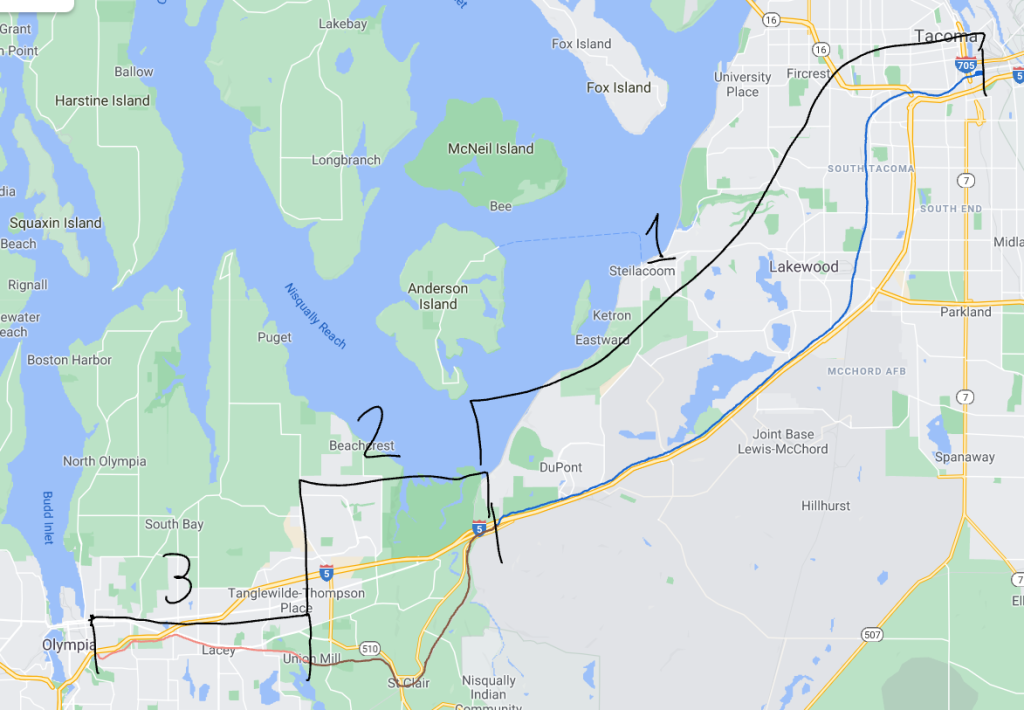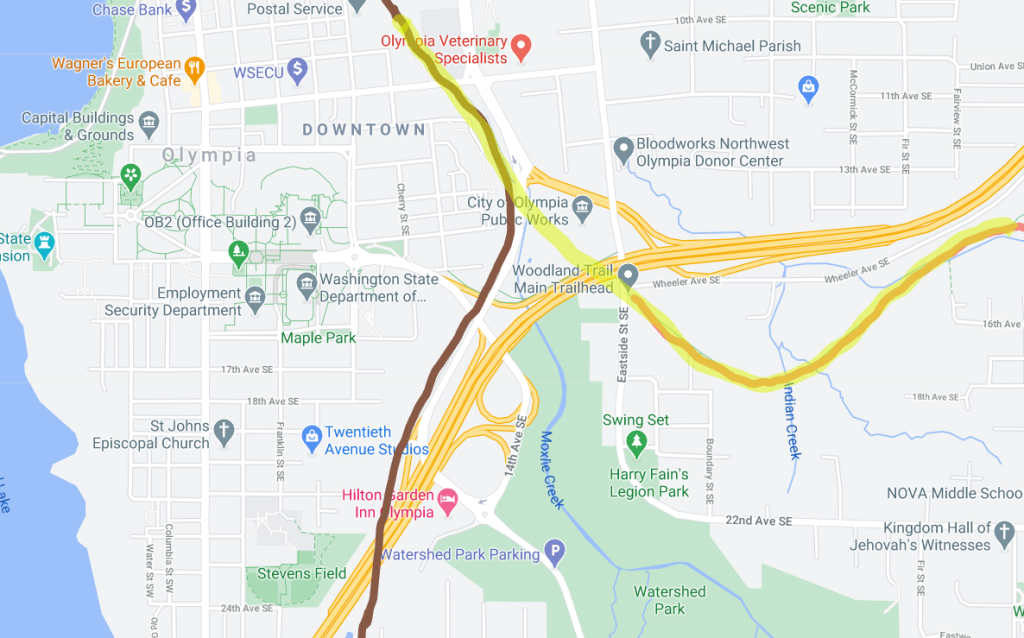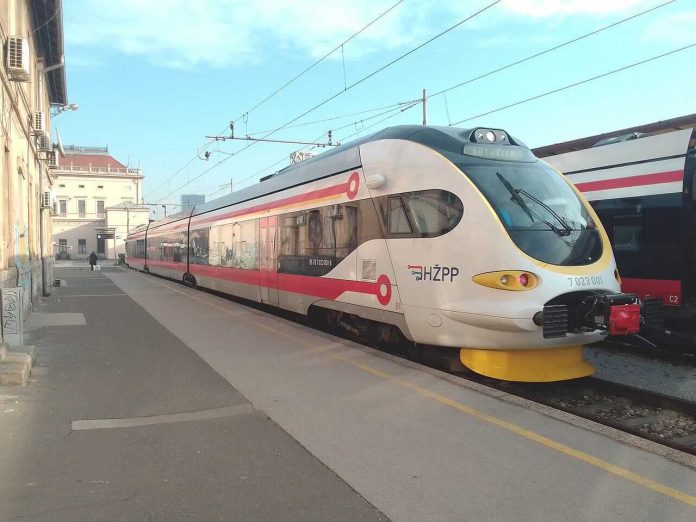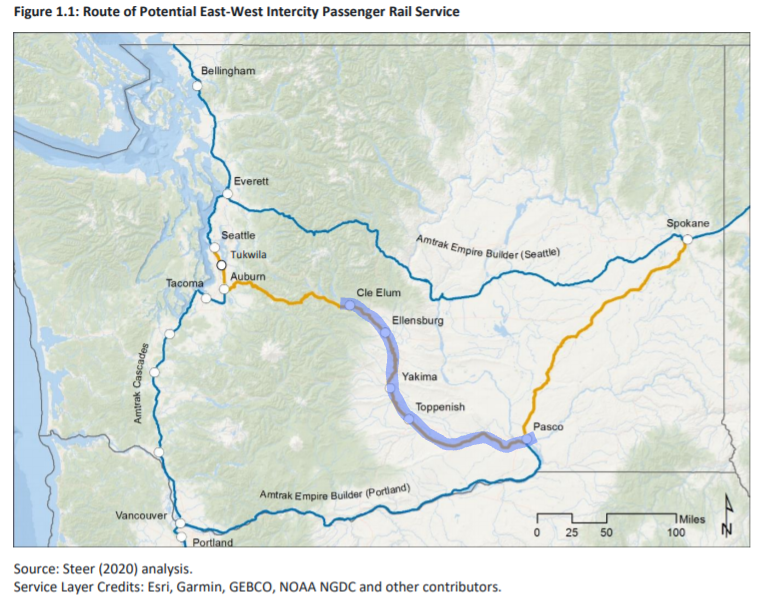Last year, when Washington’s east-west passenger rail study came out, the results were mostly uninspiring for a full corridor initially, but one particular section on demand in the Kittitas and Yakima Valleys stood out to me:
In short, local transit demand exists in communities along where rail lines run that are not currently served sufficiently by local transit options. The current Amtrak Cascades program cannot address unmet needs like these, but perhaps a slightly different program might help. To this problem, I pose the following idea: Cascades Local Rail.
The concept is relatively simple: the Washington State Department of Transportation (WSDOT) could extend the Cascades program in partnership with local transit agencies to provide local intercity service along existing rail lines or rail corridors. As this would be a local service, smaller diesel multiple unit (DMU) trains could be used instead of the full Cascades trainsets. Construction costs could be kept to a minimum by using existing stops or building very simple shelters with right-sized platforms. New railyards to store these trains would also be needed. On corridors already used by the Amtrak Cascades service, rail improvements could be shared between WSDOT and the local transit agency since both services would benefit.
Funding mechanisms could include grants, funds from local transit agencies (replacing some intercity routes), or from tax districts similar to the Sound Transit taxing district. Transit funds from the carbon fee and cap-and-trade legislation that the state legislature is working on would also be a potential funding source.
Any of these changes would require new legislation from the state legislature, but if demand exists and could benefit multiple areas, it’s worth both investing in and giving local communities the opportunity to join in on the kind of transit programs that are mostly focused in the Everett-Seattle-Tacoma corridor.
Below, I will examine a few sample corridors where this kind of service might be useful.
Cle Elum – Ellensburg – Yakima – Toppenish – Pasco
First, the line east of the Cascades that brought this idea to light is worth considering. A quick Google Maps search of transit options between these cities finds that while adjacent city pairs do not have unreasonable connection times, the overall connections between towns over longer distances soon gets out of hand.
| Bus | Rail Estimate | |
| Cle Elum to Ellensburg | 60 minutes* | 33 minutes |
| Ellensburg to Yakima | 61 minutes | 50 minutes |
| Yakima to Toppenish | 39 minutes | 16 minutes |
| Toppenish to Pasco | 180 minutes | 66 minutes |
The comparisons become even more dramatic though, if you compare through-routing (assuming three minutes dwell time per station):
| Greyhound | Rail Estimate | |
| Ellensburg to Pasco | 233 Minutes | 138 Minutes |
| Yakima to Pasco | 123 Minutes | 85 Minutes |
Given that many of the Greyhound bus routes don’t operate every day, running multiple trains per day at a competitive price could provide a superior service to what is currently offered. In addition, long-term improvements on this route could both build ridership for an eventual cross-state Amtrak Cascades service and over time build enough demand to address the big problem with a cross-state route: the slow mountain route.
| Greyhound | Rail Estimate | |
| Seattle to Ellensburg | 180 Minutes | 242 Minutes |
North Lakewood – Marysville – Everett

In the Marysville area, a roughly 12-mile long stretch of the Burlington Northern Santa Fe (BNSF) mainline could connect the new Lakewood apartment and shopping complex with Downtown Marysville and Downtown Everett. Traffic issues have often been cited in the past as reasons that Marysville could benefit in being added to the North Sounder line between Everett and Seattle. However, Marysville is currently not part of the Sound Transit taxing and service district.
From Everett, there are currently several Sound Transit buses running south that use carpool lanes, and in the not too-distant-future light rail will reach Everett Station which would make a new rail connection between Everett and cities further north much more attractive.
The Marysville-North Lakewood rail segment not only runs through the middle of town, but adjacent to SR-99 and through all of the major activity centers in town. Marysville could likely support at least two to three DMU-style stations with a single terminus station in Lakewood which has space to build a railyard to store the DMU cars and maintenance bay.
There is probably at least enough ridership to support trains every 15 to 20 minutes as evidenced by the current frequency of the adjacently running Community Transit Routes 202 and 201. To make this kind of frequency reliably possible, the main line through Marysville wound need to be double-tracked and grade-separated for major intersections (e.g., 4th Street and 88th Street NE). This would be a major safety improvement and also benefit Amtrak Cascades heading to Vancouver, British Columbia as well.
A unique benefit of this Cascades Local Rail service is that it would bring passenger rail storage further north and leave trains unaffected by the routine temporary winter closures from heavy rain events and landslides on the waterside segment between Everett and Seattle. Given that multiple agencies would benefit from this arrangement (e.g., Amtrak Cascades, Community Transit, and City of Marysville), funding could be shared among multiple agencies as well. Local officials would likely strongly support this plan on the idea of grade-separating major intersections alone, as freight trains frequently shut down all east-west traffic through the town.
Tacoma – Lacey – Olympia

The lack of frequent rail service between Olympia and Tacoma seems a bit unfortunate when one considers that publicly-owned rails already extend from Tacoma Dome to DuPont. This trackway is already shared with Sounder trains and eventually Amtrak lines that travel to Portland, Eugene, and Los Angeles. Adding more daily service between Tacoma and the end of the publicly-owned tracks could make a lot of sense, but it would make even more sense if a new segment were built as far as downtown Olympia.
The issue with the current Centennial Station serving Olympia and Lacy is that it’s nowhere near any urban area. It’s not even within the urban growth boundary of Lacey, so it’s not an ideal station for frequent transit service. The least expensive-looking extension to reach Downtown Olympia appears to be using St. Clair Junction and reactivating rail on the Woodland Trail. It could be a somewhat politically-complicated proposition since it’s currently a trail and also crosses a number of main roads on the way in, but this path provides a decent station location for Lacey and much better access to Downtown Olympia. Even if the station remained adjacent to I-5 in Olympia, it would provide far superior access than the current station.

Most of the Woodland Trail is separated from connecting roads, so it could easily be re-tracked and (with proper fencing) could even still share space with a walking and biking trail. The trouble spots are in Downtown Lacey where the track way would likely need to be elevated and in the crossing of I-5 to reach Downtown Olympia. Agreements with BNSF for rail use between Nisqually and the end of St. Clair Junction and potential use of the Genesee and Wyoming rail in Downtown Olympia to reach the downtown area could also be somewhat expensive, though the rail segments are fairly short. Additionally, land would need to be purchased in Olympia for a station and small railyard storing DMUs. There are several areas where costs could be shared though.
Additionally, rail capacity through the DuPont-to-Tacoma section would benefit Amtrak, Sound Transit, and this Olympia service, so those costs could be shared. DMUs could share Sounder platforms reducing station-building costs. And this program could provide an incentive to the state legislature to replace the infamous Mounts Road rail bridge across I-5 with one that can take more trains and allow faster, safer travel.
Electrification and expansion
For routes that prove successful, switching from diesel-powered DMUs to electric might be a prudent choice. It would reduce the carbon footprint of the services further and the old diesel vehicles could be sent to other services in the state not ready to convert or to corridors ready to experiment with a new DMU route. Multiple electrified small routes along the Amtrak Cascades corridor could help build the case for eventually electrifying the whole corridor which would reduce the carbon footprint not only for Amtrak but for statewide freight services as well.
Previous studies
If rail lines like this seem like a good idea that ought to have been studied before, that’s because they have been. Back in 2010, a WSDOT study was commissioned to analyze the possibility of running a DMU commuter train through Southeast King County from Auburn through Maple Valley and Black Diamond out to Ravensdale. The study found that a line through the area would be feasible with either 30- or 15-minute frequencies. Despite a seemingly positive study, it was never funded. Part of this might be due to a lack of synergy with any other planned use. Perhaps if a long-term plan to restore service through Stampede Pass Tunnel were aligned with this project, it would make more financial sense.
The snub of passenger rail happened even as the 2015 “Connecting Washington” package invested $16 billion in state transportation– just funneling money overwhelmingly to highway expansion. Instead, we get periodic studies, including another in 2020 that reiterated the viability of east-west passenger rail services and a state rail plan that continues to kick around the idea without much of an action plan.
In summary
The above ideas are not meant to be an exhaustive list of all potential local routes that might be worth considering, and the ones listed here may or may not be the most viable options. Given the desire to expand rail to more parts of the state and the lack of good intercity transit options in many areas, it might be worth adding this kind of study in parallel with future high-speed rail studies (in addition to fully funding the planned WSDOT build out of Amtrak Cascades service). These services together would provide a lot of intercity transit connections that simply do not exist today and make reducing car trips in more parts of our state more feasible as we seek to reduce the carbon footprint of Washington State.

Charles Bond
Charles is an avid cyclist that uses his bike as his primary mode of transportation. He grew up in the Puget Sound, but is currently overseas living in Japan. He covers a range of topics like cycling, transit, and land use. His time in Tokyo really opened his eyes to what urbanism offers people and has a strong desire to see growth happen in Seattle.



